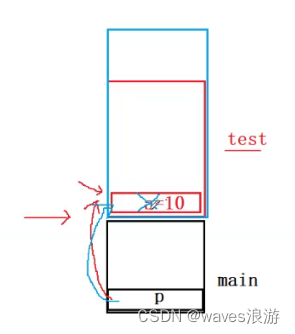本文介绍: 注意:由于手头上没有该摄像头,本人只是查询资料,以及文档之后写的代码,并没有实操。需要安装opencv、librealsense2库。
一、代码
#include <opencv2/opencv.hpp>
#include <opencv2/dnn/dnn.hpp>
#include <librealsense2/rs.hpp> // Include RealSense Cross Platform API
using namespace cv;
using namespace dnn;
using namespace std;
using namespace rs2;
// 类名数组,这里需要替换为实际YOLO模型所检测的对象的类名
const char* classNames[] = {"object1", "object2", "object3", "object4"};
int main(int argc, char** argv)
{
// 模型权重和配置文件路径,这些文件包含了训练好的YOLO模型参数和网络配置
String model = "yolov8.onnx"; // 替换为实际模型文件路径
// 加载预训练的模型和配置到DNN网络中
Net net = readNetFromONNX(model);
// 设置推理引擎后端为OpenCV,目标设备为CPU
net.setPreferableBackend(DNN_BACKEND_OPENCV);
net.setPreferableTarget(DNN_TARGET_CPU);
// Declare depth colorizer for pretty visualization of depth data
colorizer color_map;
// Declare RealSense pipeline, encapsulating the actual device and sensors
pipeline p;
// Start streaming with default recommended configuration
p.start();
// 循环直到用户按下键盘上的任意键
while (waitKey(1) < 0) {
// Wait for the next set of frames from the camera
frameset frames = p.wait_for_frames();
// Get a frame from the RGB camera
frame color = frames.get_color_frame();
// Create OpenCV matrix of size (color_height, color_width)
Mat frame(Size(640, 480), CV_8UC3, (void*)color.get_data(), Mat::AUTO_STEP);
Mat blob; // 用于存储处理后的图像,以适应网络输入
// 将帧图像转换为网络输入所需格式
blobFromImage(frame, blob, 1/255.0, cv::Size(416, 416), Scalar(0,0,0), true, false);
// 将blob设置为网络的输入
net.setInput(blob);
// 运行前向传递以获取网络的输出层
vector<Mat> outs;
net.forward(outs, net.getUnconnectedOutLayersNames());
// 遍历网络输出的每一层结果
for (size_t i = 0; i < outs.size(); ++i) {
for (int j = 0; j < outs[i].rows; ++j) {
Mat scores = outs[i].row(j).colRange(5, outs[i].cols);
Point classIdPoint;
double confidence;
minMaxLoc(scores, 0, &confidence, 0, &classIdPoint);
if (confidence > 0.5) {
int centerX = (int)(outs[i].at<float>(j, 0) * frame.cols);
int centerY = (int)(outs[i].at<float>(j, 1) * frame.rows);
int width = (int)(outs[i].at<float>(j, 2) * frame.cols);
int height = (int)(outs[i].at<float>(j, 3) * frame.rows);
int left = centerX - width / 2;
int top = centerY - height / 2;
rectangle(frame, Rect(left, top, width, height), Scalar(0, 255, 0), 2);
int classIdx = static_cast<int>(classIdPoint.x);
string classLabel = string(classNames[classIdx]);
string label = classLabel + ":" + format("%.2f", confidence);
int baseLine;
Size labelSize = getTextSize(label, FONT_HERSHEY_SIMPLEX, 0.5, 1, &baseLine);
top = max(top, labelSize.height);
rectangle(frame, Point(left, top - labelSize.height), Point(left + labelSize.width, top + baseLine), Scalar::all(255), FILLED);
putText(frame, label, Point(left, top), FONT_HERSHEY_SIMPLEX, 0.5, Scalar(0,0,0));
}
}
}
// 展示处理后的帧
imshow("YoloV8", frame);
}
return 0;
}
注意:由于手头上没有该摄像头,本人只是查询资料,以及文档之后写的代码,并没有实操
二、安装包
需要安装opencv、librealsense2库
链接:Intel.RealSense.SDK.zip资源-CSDN文库
原文地址:https://blog.csdn.net/qq_58060770/article/details/136082485
本文来自互联网用户投稿,该文观点仅代表作者本人,不代表本站立场。本站仅提供信息存储空间服务,不拥有所有权,不承担相关法律责任。
如若转载,请注明出处:http://www.7code.cn/show_68073.html
如若内容造成侵权/违法违规/事实不符,请联系代码007邮箱:suwngjj01@126.com进行投诉反馈,一经查实,立即删除!
主题授权提示:请在后台主题设置-主题授权-激活主题的正版授权,授权购买:RiTheme官网
声明:本站所有文章,如无特殊说明或标注,均为本站原创发布。任何个人或组织,在未征得本站同意时,禁止复制、盗用、采集、发布本站内容到任何网站、书籍等各类媒体平台。如若本站内容侵犯了原著者的合法权益,可联系我们进行处理。





